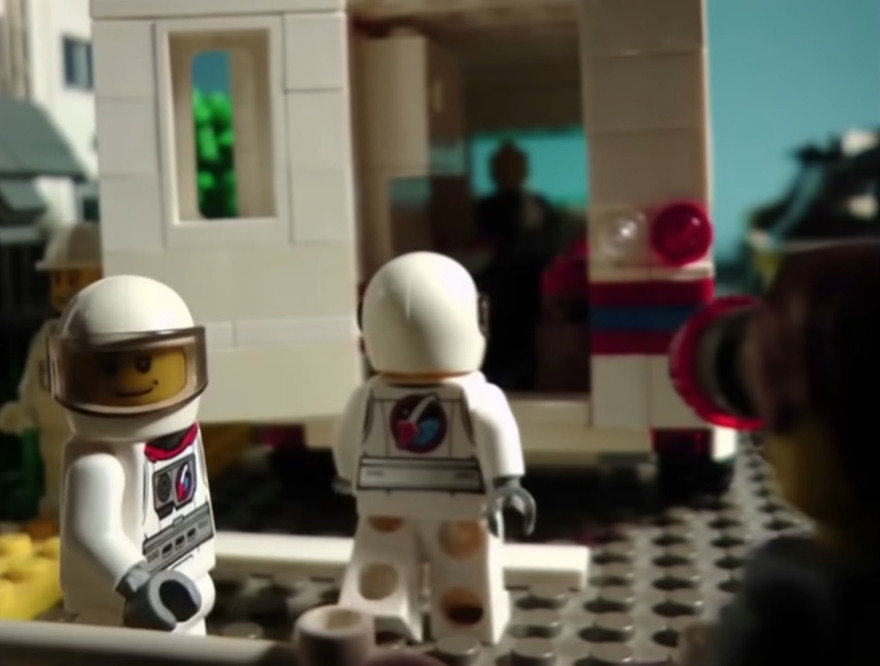Ever wished your favorite action movie felt a little less jerky, or that shaky phone video of your kid’s soccer game was smoother? Enter frame interpolation, a mind-blowing technology powered by Artificial Intelligence (AI) that’s transforming the way we experience videos.
What Exactly is Frame Interpolation?
Imagine a video as a flipbook – a series of still images (called frames) flipping rapidly one after another. Standard video playback typically shows 24 or 30 frames per second (fps). However, fast-moving objects or camera pans can sometimes appear blurry or jumpy at these frame rates.
Frame interpolation tackles this issue by creating entirely new frames between the existing ones. It’s like adding missing puzzle pieces, but for videos! AI algorithms analyze the original frames, considering motion, direction, and object details, to estimate what the “in-between” frames would look like. This effectively increases the frame rate, resulting in smoother, more fluid video playback.
Deep Dive: How AI Makes Frame Interpolation Work
While the previous section provided a high-level overview, here’s a deeper look at the magic behind AI-powered frame interpolation:
1. Motion Detection: The Art of Seeing Movement
Imagine the AI as a tireless investigator meticulously examining a crime scene (the video frames). Its first task involves analyzing consecutive frames to understand how objects are moving within the scene. Here’s how it achieves this:
Optical Flow:
This technique calculates the apparent motion of pixels between frames. By analyzing how pixels change position, the AI can determine the direction and speed of movement across the entire frame.
Feature Tracking:
The AI identifies and tracks specific features within the video, such as corners of objects or distinctive patterns. By monitoring how these features move across frames, the AI can build a more comprehensive picture of overall motion.
2. Object Recognition: Unveiling the Scene’s Cast
Beyond just tracking movement, the AI acts like a super-powered detective, identifying and analyzing the shapes and details of objects in each frame. Here’s its toolkit:
Deep Learning Techniques:
Convolutional Neural Networks (CNNs) are a type of AI particularly adept at image recognition. Trained on vast datasets of images and videos, these CNNs can identify objects like cars, people, or buildings within the frames.
Object Segmentation:
This technique goes beyond simple recognition. The AI can not only identify objects but also understand their boundaries and separate them from the background. This allows for a more precise analysis of individual object movement.
3. Frame Prediction: A Glimpse into the In-Between
With a solid understanding of motion patterns and identified objects, the AI becomes a fortune teller, predicting the likely appearance of the missing frames. This is where the real magic happens:
Motion Interpolation:
Using the data from motion detection, the AI estimates the trajectory of objects between frames. It predicts how an object’s position, size, and orientation will change based on the established motion patterns.
Temporal Correlation:
The AI analyzes the temporal relationship between consecutive frames. By understanding how details like lighting and color change over time, we can predict how these elements will evolve in the missing frames.

4. Frame Generation: Bringing the Missing Pieces to Life
Finally, the AI transforms from a detective and fortune teller into a skilled artist. It fills in the gaps between the originals, creating new frames that maintain consistency with the overall scene. Here’s the artistic process:
Pixel Interpolation:
Based on surrounding frames and the predicted motion, the AI calculates the most likely color values for pixels in the missing frames. Techniques like linear interpolation or more advanced algorithms are used to create smooth transitions.
Texture Synthesis:
For complex textures like grass or hair, the AI leverages its knowledge of existing textures within the video to generate realistic details for the missing frames. This ensures the newly created frames blend seamlessly with the originals.
The Power of AI Training
This entire process is powered by AI models trained on massive datasets of videos. These datasets encompass a wide variety of content, allowing the AI to learn and adapt to different motion patterns, object types, and lighting conditions. As AI technology continues to evolve, the training datasets grow larger and more diverse, leading to ever-increasing sophistication and accuracy in frame interpolation.
This detailed explanation provides a deeper understanding of how AI analyzes video, predicts missing frames, and ultimately generates smooth, realistic video experiences.
Why Frame Interpolation Makes Videos More Enjoyable for You
Imagine the difference between watching a fast-paced sports highlight reel at 24 fps and experiencing it at a smooth 60 fps. Frame interpolation offers several benefits for viewers:
Enhanced Smoothness:
The most noticeable advantage of frame interpolation is the elimination of choppiness, especially in fast-paced scenes. Standard video playback at 24 or 30 fps can cause rapid movement to appear blurry and jumpy. Frame interpolation bridges this gap by creating new frames between the originals, effectively increasing the frame rate.
The result? A silky smooth viewing experience akin to watching a high-budget movie. Imagine a high-speed car chase – with frame interpolation, you’ll be able to track every twist and turn with remarkable clarity, feeling truly immersed in the action. (https://www.youtube.com/watch?v=z4ZIefXvrd4)
Improved Clarity:
Increased frame rate can lead to sharper visuals and a reduction in motion blur. Think of it like watching a fast-moving car race – you’ll be able to follow the cars much easier with frame interpolation.
Upscaling Legacy Content:
Older movies and TV shows with lower frame rates can be revitalized with frame interpolation, offering a more modern viewing experience. It’s like giving your favorite classics a high-definition makeover!
Slow-Motion Effects:
AI can be used to create smooth slow-motion replays from regular video footage, adding a dramatic effect to your videos. Imagine reliving that amazing goal in perfect slow-motion detail!
Seeing Frame Interpolation in Action
Frame interpolation is already being implemented in various ways:
- TV Manufacturers: Leading TV manufacturers are integrating frame interpolation technology into their high-end models, allowing viewers to enjoy smoother visuals on their home TVs. (https://github.com/google-research/frame-interpolation)
- Streaming Services: Some streaming platforms are offering content with frame interpolation as an optional setting, allowing viewers to choose their preferred level of smoothness. You get to be in control of how smooth you want your videos to be!
- Video Editing Software: Popular video editing software programs are incorporating frame interpolation tools, empowering content creators to enhance their video productions. It’s like giving them a magic tool to make their videos even more impressive!
Is Frame Interpolation Perfect? Not Quite…
While frame interpolation offers significant advantages, it’s important to consider some limitations:
- The “Soap Opera Effect”: In some cases, overly aggressive frame interpolation can create an artificial smoothness, sometimes referred to as the “soap opera effect,” which some viewers find distracting. This is like adding too much sugar to your cereal – it can be a bit too much! The good news is that you can usually adjust the interpolation settings to find the right balance.
- Loss of Detail: In scenarios with complex movements or rapid scene changes, the AI might struggle to generate accurate in-between frames, potentially introducing artifacts or visual inconsistencies. It’s like trying to complete a puzzle with
Frame Interpolation: A Glimpse into the Future
Frame interpolation is a powerful technology with the potential to significantly enhance the way we experience videos. As AI continues to develop, here are some exciting possibilities for the future:
Real-time Processing:
Imagine frame interpolation happening in real-time as you watch a video, eliminating processing delays. This would be like having a super-powered computer working behind the scenes to make your videos smooth instantly!
Adaptive Interpolation:
AI could dynamically adjust the level of interpolation based on the specific video content and viewer preferences. It would be like having a smart assistant that tailors the smoothness to your liking, making action scenes super smooth and documentaries more natural.
Enhanced Artistic Control:
Content creators could have more granular control over the look and feel of interpolated frames, allowing for stylistic choices. This would be like giving them a paintbrush to fine-tune the smoothness and create unique visual experiences.
Frame interpolation is still evolving, but it’s clear that AI is playing a major role in shaping the future of video. With continued development, we can expect even more exciting advancements that will blur the lines between reality and smooth, immersive video experiences.
So, Should You Use Frame Interpolation?
Ultimately, the decision of whether to use frame interpolation depends on your personal preferences and the type of video you’re watching. Here are some things to consider:
- Content-Type: For action movies, sports highlights, or fast-paced games, frame interpolation can significantly improve the viewing experience.
- Personal Preference: If you enjoy a very smooth and fluid visual experience, then frame interpolation might be a good choice for you. However, if you prefer a more cinematic look with a slight frame-by-frame feel, you might prefer to keep it off.
- Availability: Not all devices or platforms offer frame interpolation as an option. Check your TV settings, streaming service options, or video editing software to see if it’s available.
The best way to decide is to experiment! Try watching a video with and without frame interpolation to see which you prefer. With its ability to enhance smoothness, and clarity, and even create slow-motion effects, frame interpolation is a valuable tool that can make your video-watching experience even more enjoyable.
